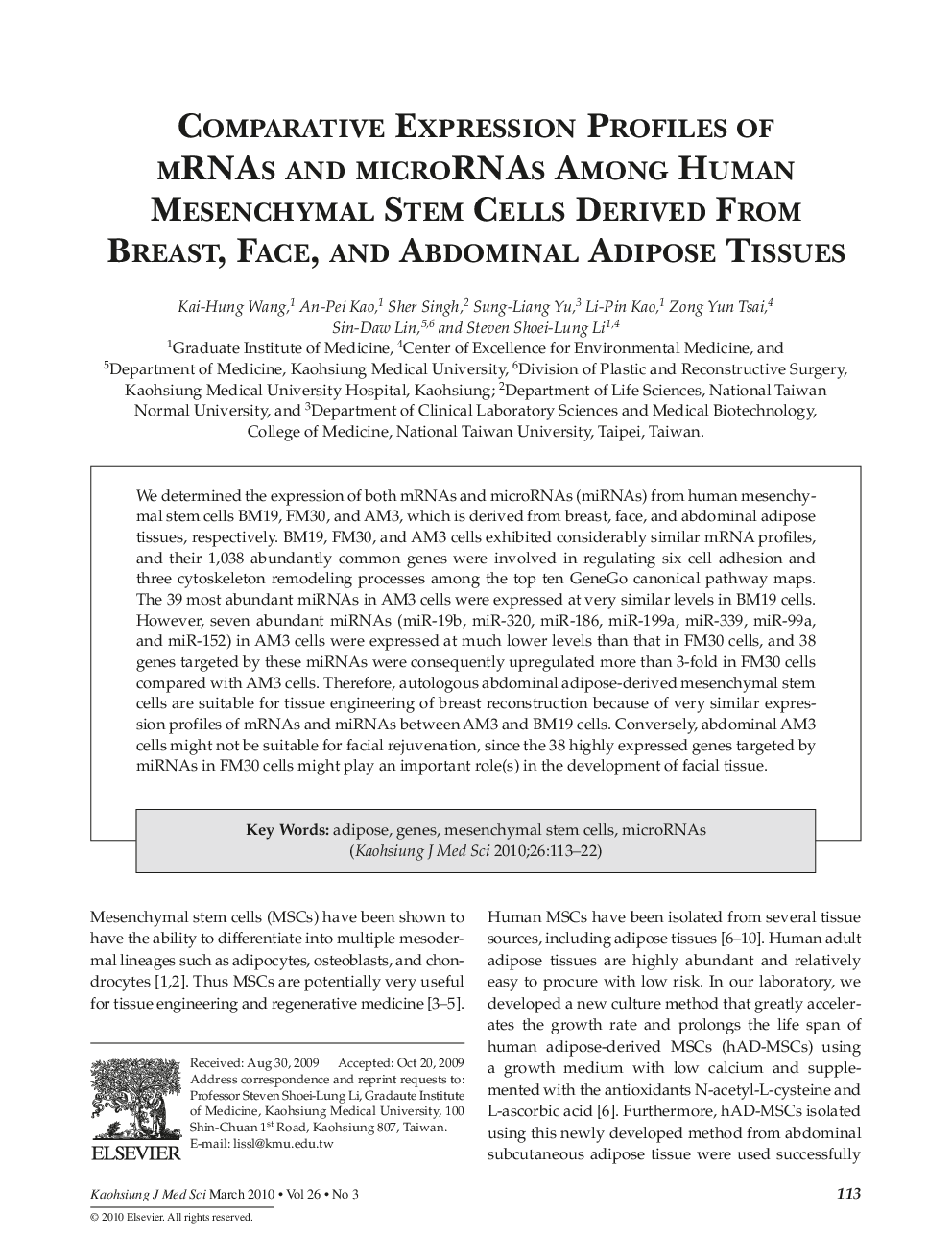| Article ID | Journal | Published Year | Pages | File Type |
|---|---|---|---|---|
| 3486075 | The Kaohsiung Journal of Medical Sciences | 2010 | 10 Pages |
We determined the expression of both mRNAs and microRNAs (miRNAs) from human mesenchymal stem cells BM19, FM30, and AM3, which is derived from breast, face, and abdominal adipose tissues, respectively. BM19, FM30, and AM3 cells exhibited considerably similar mRNA profiles, and their 1,038 abundantly common genes were involved in regulating six cell adhesion and three cytoskeleton remodeling processes among the top ten GeneGo canonical pathway maps. The 39 most abundant miRNAs in AM3 cells were expressed at very similar levels in BM19 cells. However, seven abundant miRNAs (miR-19b, miR-320, miR-186, miR-199a, miR-339, miR-99a, and miR-152) in AM3 cells were expressed at much lower levels than that in FM30 cells, and 38 genes targeted by these miRNAs were consequently upregulated more than 3-fold in FM30 cells compared with AM3 cells. Therefore, autologous abdominal adipose-derived mesenchymal stem cells are suitable for tissue engineering of breast reconstruction because of very similar expression profiles of mRNAs and miRNAs between AM3 and BM19 cells. Conversely, abdominal AM3 cells might not be suitable for facial rejuvenation, since the 38 highly expressed genes targeted by miRNAs in FM30 cells might play an important role(s) in the development of facial tissue.
